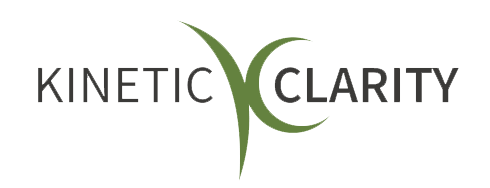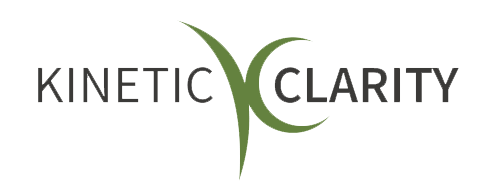Empathy in Leadership: The First Step Towards Transformative Workplace Relationships
Empathy is often misunderstood in the corporate world. Let's set the record straight.

Many of us think of ourselves as empathetic. After all, we show we care, right? That’s super empathetic. Isn’t it? Empathy in leadership can’t be that much different…
Well…
Empathy, often misunderstood and misvalued, is the cornerstone of transformative leadership. In the hustle of meeting targets and pushing boundaries, we often overlook this silent yet powerful tool.
This article explores why empathy is the first, and perhaps most crucial, step in fostering relationships that can change the workplace for the better.
Understanding Empathy in Leadership: What It Is and What It Isn't
When we talk about empathy in leadership, it’s like opening a window into the soul of our team. We aim to truly see and understand the people we lead, grasping the words they say and the emotions and motivations behind them. Yet, empathy is often misunderstood in the corporate world, seen as a soft skill, or mistaken for other emotions. Let's set the record straight.
What Empathy Is
At its most simplistic, empathy in leadership is the ability to sense and understand the emotions of others. It puts you in their shoes: not to take a walk, but to stand and see the world as they do.
We need to listen.
It’s about listening. Not just to respond, as we sometimes do, but to understand. When a leader is empathetic, they don’t just hear the concerns of their team; they feel them. This doesn’t mean taking on everyone's emotional baggage; rather, it's about being aware and considerate of the emotional undercurrents that run through every workplace.
We need to connect.
Empathy in leadership is connection. It recognizes that behind every email, every report, and every meeting, there’s a human being with hopes, fears, and dreams. It's understanding that these human elements don’t detract from professionalism; they enrich it. Empathetic leaders can tailor their communication and management style to resonate with each individual team member, fostering a sense of belonging and understanding.
What Empathy Isn’t
However, empathy isn’t about being a pushover or always agreeing with everyone. This is a common misconception. Empathy doesn’t mean you forsake your viewpoints or the organization's goals. Rather, you consider and respect others’ perspectives before making informed decisions.
It’s not sympathy.
It’s also not the same as sympathy. Sympathy is feeling sorry for someone, while empathy is understanding their feelings and perspective. A sympathetic leader might offer condolences on a tough day. An empathetic leader understands how that tough day might affect their team member's work and well-being and will offer support accordingly.
It’s not being a problem-solver.
Moreover, empathy isn't solving everyone's problems. It's not the responsibility of a leader to fix everything for their team. Instead, empathetic leadership involves empowering team members by acknowledging their feelings and helping them navigate through challenges rather than simply taking the reins.
It’s not being weak.
Empathy in leadership doesn't equate to weakness. On the contrary, it's a sign of strength. It takes courage to open yourself to the emotions and needs of others to lead with your mind and heart. This balance is what makes empathetic leaders so effective and respected.
In a nutshell, empathy in leadership is about understanding, respect, and connection. It’s a powerful tool that, when used correctly, can transform teams and organizations, leading to more effective communication, higher morale, and better overall performance. It’s not being soft; it’s being smart in understanding the human element of leadership.
The Role of Empathy in Leadership
Empathy in leadership is a key driver of organizational success. It binds you to your team, fostering an environment where understanding and respect are prominent. Let's explore how empathy plays a crucial role in various aspects of leadership.
Building Trust and Loyalty
The first step in demonstrating empathy is building trust. When team members feel you understand and value their perspectives, a strong bond of trust is formed. This trust translates into loyalty, reducing turnover and creating a stable, committed workforce. Empathetic leaders recognize the individuality of each team member, valuing their unique contributions and fostering an environment where everyone feels heard and respected.
Enhancing Communication
Effective communication is the bedrock of any successful team, and empathy is its cornerstone. Empathetic leaders are adept at reading between the lines, understanding not just what is said, but also what is left unsaid.
This keen sense of awareness allows for more nuanced and effective communication. It encourages openness and honesty, leading to clearer understanding and fewer misunderstandings.
Navigating Conflict
Inevitably, conflicts arise in any workplace. Empathy equips you, as a leader, with the skills to navigate these conflicts with a deeper understanding of all sides involved. By acknowledging and validating different viewpoints, empathetic leaders can de-escalate tensions and find solutions that respect everyone's needs. This approach not only resolves conflicts more effectively, but also strengthens team cohesion in the process.
Driving Innovation and Creativity
Empathy in leadership isn’t just about managing emotions; it’s also about inspiring innovation. When leaders are empathetic, they create a safe space for team members to express their ideas and take risks.
This supportive environment is fertile ground for creativity and innovation. Team members feel encouraged to think outside the box and contribute their best ideas without fear of judgment or failure.
Enhancing Decision Making
Empathy contributes significantly to decision-making processes. By understanding the needs and motivations of their team, leaders can make more informed and considerate decisions. This empathetic approach ensures that decisions are not only strategic but also human-centric, taking into account the impact on people as much as on business outcomes.
Fostering an Inclusive Workplace Culture
Lastly, empathy is pivotal in creating an inclusive workplace. It involves acknowledging diverse perspectives and experiences, and valuing the rich tapestry of ideas and backgrounds each team member brings. In an empathetically led team, everyone feels they belong and are valued, which is essential for a truly inclusive culture.
The role of empathy in leadership is multifaceted and profound. It helps you build trust, enhance communication, resolve conflicts, drive innovation, make informed decisions, and create an inclusive culture. Far from being a peripheral skill, empathy is central to effective leadership, playing a critical role in shaping not just the morale and satisfaction of the team but also the overall success and resilience of the organization.
I appreciate how Daniel Goleman, a renowned thought leader in emotional intelligence, reinforces the importance of emotional intelligence in leadership, with a special emphasis on empathy. In his book, "Optimal: How to Sustain Personal and Organizational Excellence Every Day" Goleman emphasizes that optimal organizational functioning is closely linked to the emotional intelligence of its leaders, with empathy being a key component.
Empathetic leadership isn’t just about better workplace relationships, he argues. It’s a strategic approach contributing to sustained excellence and resilience in organizations. By integrating Goleman's insights, leaders can appreciate the broader impact of empathy, seeing it as a catalyst for personal and organizational growth.
More than a theoretical exploration, it’s a practical guide that resonated with me through my experiences of working with leaders. Goleman’s emphasis on empathy as a critical component of emotional intelligence matches what I’ve observed about the challenges faced by leaders with low emotional intelligence. Leaders who struggle in their roles usually have difficulties in areas like listening, appreciating others' stories, and understanding the emotional undercurrents within their teams.
I particularly value how Goleman's book provides the "why" and the "how" of cultivating emotional intelligence. His practical approach to developing skills like self-awareness, empathy, and social competence is crucial for leaders who want to positively impact their organizations.
Practical Steps to Cultivate Empathy
Empathy, while natural to some, can be developed and enhanced with intentional practice. Here are some practical steps leaders can take to cultivate empathy:
- Active Listening: Truly listen to what team members are saying without formulating a response in your mind. Pay attention to their words, tone, and body language.
- Perspective-Taking: Regularly put yourself in your team members' shoes. Try to see situations from their perspectives, especially when making decisions that affect them.
- Open Communication: Encourage a culture where team members feel safe to express their thoughts and feelings. Be approachable and open to feedback.
- Emotional Self-Awareness: Reflect on your own emotions and how they influence your behavior. Understanding your emotional triggers can help you respond more empathetically to others.
- Empathy Training and Workshops: Consider enrolling in training programs or workshops focused on developing empathy and emotional intelligence, like Dare to Lead™ and executive coaching programs.
Conclusion
In wrapping up, it’s clear that empathy is not just a nice-to-have quality in leadership; it's a must-have. An empathetic leader can transform teams and organizations, leading to more effective communication, higher morale, and better overall performance. It’s not about being soft (although there’s nothing wrong with being soft); it’s about being smart in understanding and valuing the human element of leadership.
Empathy in leadership is a journey, not a destination. It requires continuous effort and intentionality. But the rewards, both for the leader and the team, are immeasurable. It leads to a workplace where trust, innovation, and inclusivity thrive, and where excellence is not just a goal but a sustainable reality.












